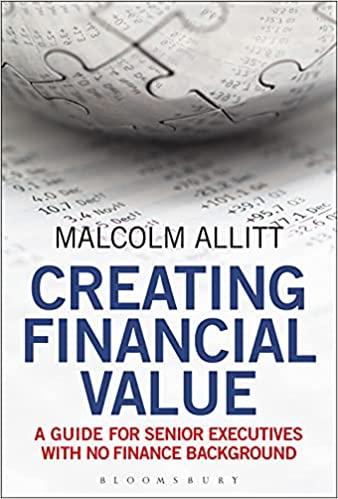Question
Phase II: Risk and Return Objective Estimate the risk parameters for your company and use these parameters to estimate costs of equity and capital for
Phase II: Risk and Return
Objective Estimate the risk parameters for your company and use these parameters to
estimate costs of equity and capital for the firm.
Key Steps
1. Looking at the stock price history of your company, evaluate both its riskiness and its performance as an investment, relative to the market and after adjusting for risk.
2. Develop a measure of equity risk in the company and compute a cost of equity for it. If the company is in multiple businesses and regions, estimate the cost of equity for each.
3. Develop or find a measure of default risk in the company and compute a cost of debt for it.
4. Based on the mix of debt and equity used by the company, estimate an overall cost of capital for the company. If it is in individual businesses and regions, estimate the cost of capital for each.
the company is NIKE
2. Estimating relative risk (5 marks)
a. Run a regression of returns on your firms stock against returns on a market index, preferably using monthly data and 5 years of observations. Use the regression to evaluate your companys performance on a risk adjusted basis during the period of the regression and its riskiness, relative to the market, and break down the risk into firm specific and market components. To run the regression, you will need to get data on past returns for your stock and for a market index.
- What is the intercept of the regression? What does it tell you about the performance of this company's stock during the period of the regression?
- What is the slope of the regression?
- What does it tell you about the risk of the stock?
- How precise is this estimate of risk? (Provide a range for the estimate.)
- What portion of this firm's risk can be attributed to market factors? What portion to firm-specific factors? Why is this important?
- How much of the risk for this firm is due to business factors? How much of it is due to financial leverage?
b. Based on your companys business mix, estimate a bottom up beta for your companys operating businesses. You should be able to find the breakdown by business in your companys financial filings, though the details are richer in some than others. To get the beta for each business, you will need to find other publicly traded companies that operate primarily in that business, average their betas and correct for financial leverage and cash holdings.
- Break down your firm by business components, and estimate a business beta for each component
- Attach reasonable weights to each component and estimate an unlevered beta for the business.
- Using the current leverage of the company, estimate a levered beta for each component.
c. Estimate the market value of debt outstanding in the company (see below), compute a market debt to equity ratio for the entire company, and use that ratio to compute a levered beta for the company. If you can allocate the debt across the different businesses, compute the debt to equity ratio and levered beta for each business. (If not, use the companys debt to equity ratio for all of the businesses).
d. Use the levered betas, in conjunction with the risk-free rate and equity risk premium, to compute costs of equity for each business and for the overall company.
Step by Step Solution
There are 3 Steps involved in it
Step: 1

Get Instant Access to Expert-Tailored Solutions
See step-by-step solutions with expert insights and AI powered tools for academic success
Step: 2

Step: 3

Ace Your Homework with AI
Get the answers you need in no time with our AI-driven, step-by-step assistance
Get Started


